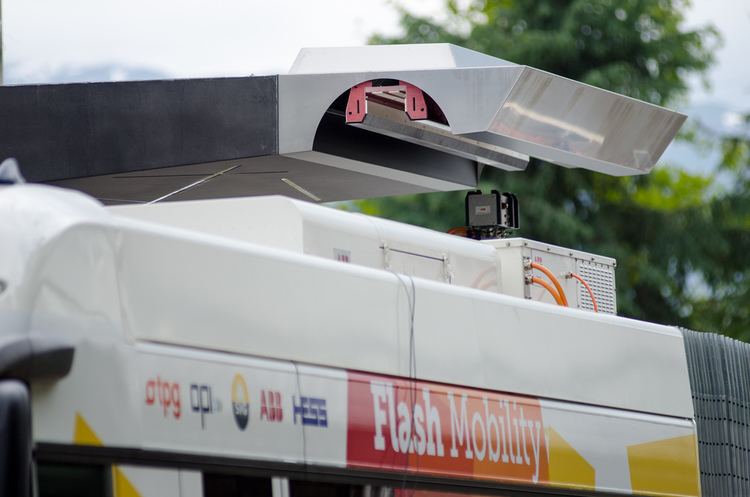 | ||
The TOSA concept and test bus is a full large capacity urban battery electric bus system developed in Geneva by ABB Sécheron, a subsidiary of the ABB Group.
Contents
Aim of the concept and project
The aim is to provide a zero local emission mass public transportation bus system with high passenger capacity and no overhead line.
The concept supports same operating timetable and frequency as line operated with diesel buses, trolleybuses and operating conditions of Bus Rapid Transit systems. The following aspects have been considered to comply with a sustainable mobility approach:
Origin of name
TOSA is an acronym for "Trolleybus Optimisation du Système d'Alimentation", French for "Trolleybus Optimized Power Supply". It originally stood for Transports Publics Genevois, Office de la Promotion Industrielle, Services Industriels de Genève and ABB Group, the four partners of the demonstrator project TOSA2013
The technical concept
The energy is collected along the route at some dedicated bus stops (every 3rd or 4th bus stops) while people are disembarking and embarking. Thus, there is no impact on the timetable. The automatic electric connection is made from the top within 1 second while the bus is stopped at the bus stop. Than charging is made at high power (400 kW on the demonstrator) during the 15 seconds the door remains open. At the terminal, the battery is topped up within 3–4 minutes.
The infrastructure
According to the line profile (total length and altitude) and service (frequency), the Flash Feeding Station (FFS) are distributed along the line at some (each 3rd or 4th bus stops - roughly 1.5–2 km) intermediate bus stops. At each end of the line, the recharge is performed by the Terminal Feeding Station (TFS).
Demonstrator (Proof-of-Concept)
The demonstrator (one articulated bus, one Flash charging station and one terminal station) is in service since May 26, 2013 between Geneva Airport and PALEXPO. It includes:
Partners
Other partners
